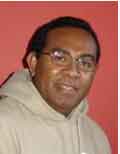Challenging "West versus Islam" media paradigms
 In his influential 1981 book,
Covering Islam, the late author and literary theorist Edward W. Said captured
public attention regarding how experts and the media have determined the way we
see Islam. At the heart of Said's analysis is the notion that media coverage of
Islam has closely associated Muslims with militancy, danger and anti-Western
sentiment....
In his influential 1981 book,
Covering Islam, the late author and literary theorist Edward W. Said captured
public attention regarding how experts and the media have determined the way we
see Islam. At the heart of Said's analysis is the notion that media coverage of
Islam has closely associated Muslims with militancy, danger and anti-Western
sentiment....
For the past
three decades, scholarly studies on Islam and Muslims in the media have heavily
relied on frameworks such as Said's analyses, Huntington's "clash of
civilisations" theory, Islamophobia or cultural racism to analyse the questions
regarding representations of Islam and Muslims in the media. These frameworks
still have a big influence on current studies. In fact, a good number of papers
presented during the recent "Islam and media" conference were based on these
frameworks. -- Gabriel Faimau
By Gabriel Faimau
At an international conference
on "Islam and the Media" organised by the Centre for Media, Religion and Culture
at the University of Colorado-Boulder in January, many of the participants,
including myself, examined the negative stigma attached by the media to Islam
and Muslims, especially after 9/11 and various terrorist attempts made in the
name of Islam by extremists and militants operating on the fringes of the larger
mainstream Muslim community.
In his influential 1981 book,
Covering Islam, the late author and literary theorist Edward W. Said captured
public attention regarding how experts and the media have determined the way we
see Islam. At the heart of Said's analysis is the notion that media coverage of
Islam has closely associated Muslims with militancy, danger and anti-Western
sentiment.
In 1997, the Runnymede Trust, a
UK-based think tank that promotes a successful multi-ethnic Britain, echoed the
same idea in "Islamophobia: A Challenge for Us All".
A similar tendency was employed
to read the events of 9/11 in 2001. Analysing these events, a good number of
pundits, analysts, journalists and politicians believed that what we witnessed
in the 9/11 attacks and its aftermath was a "clash of civilisations", that is, a
battle between Western and Islamic civilisations as predicted earlier by
political scientist Samuel P. Huntington.
For the past three decades,
scholarly studies on Islam and Muslims in the media have heavily relied on
frameworks such as Said's analyses, Huntington's "clash of civilisations"
theory, Islamophobia or cultural racism to analyse the questions regarding
representations of Islam and Muslims in the media. These frameworks still have a
big influence on current studies. In fact, a good number of papers presented
during the recent "Islam and media" conference were based on these
frameworks.
Of course, the use of such
frameworks undeniably shapes the outcome of such findings and analysis. The
problem, however, is that at the heart of the above approaches is a binary way
of thinking which puts the West on one side and Islam on the
other.
Why is the media so obsessed
with this binary approach? In my opinion, the binary style of thinking raises
two issues.
First, it provides no space for
understanding the productive side of the encounter of people with different
cultural and religious backgrounds. In a society characterised by increasing
complexity, society cannot be just simply painted black and white. After all,
society is not static. It has always been dynamic.
Second, the binary approach,
which includes the idea of "West versus Islam" or the civilised versus the
uncivilised, has been developed upon the premise that media discourse has the
power to control the unjust social representations of other cultures or
religions. This premise assumes that people are basically trapped, or even
imprisoned, in a fixed context of clash. As a result, the binary approach is
inadequate for the complex challenges faced by a multicultural
society.
The news, however, is not that
bad. As we move on to a new decade, a continued exploration of cultural or
religious representation based on dialogue offers more hope to the encounters of
people from different cultures and faiths than what is currently portrayed in
the media.
Indeed, people of different
cultures or faiths are naturally strangers to each other. For the possibility of
recognising and respecting each other to occur, a courageous step should be
taken through which must move toward the other and allow the unusual and strange
to become internalised.
In this way, as argued by Zali
Gurevitch, Professor of Anthropology at Jerusalem's Hebrew University, one's
uniqueness is recognised and differences are accepted without hostility. If
studies of media representations of cultures and religions give more space for
analysis based on dialogue-centric approaches, in today's multicultural society,
we would move forward with more confidence and hope.
* Gabriel Faimau is a Ph.D.
researcher, focused on the representation of Islam and Muslims in the British
Christian media, in the Department of Sociology at the University of Bristol in
the United Kingdom. This abridged article is distributed by the Common Ground
News Service (CGNews) with permission from the author. The full text can be
found at www.thejakartapost. com.




 Sultan Shahin
Sultan Shahin


0 comments:
Post a Comment